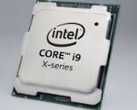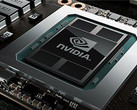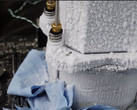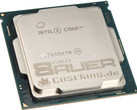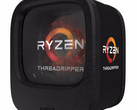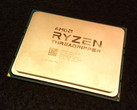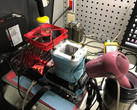Intel’s i9-7890XE is their current X299 performance king, with 18 cores and 36 threads running at a stock speed of 2.6/4.2 GHz (base/turbo). Well-known overclocker, der8auer, has had a chance to overclock one of these using a liquid nitrogen (LN2) setup where he hit a maximum overclock of 6.1 GHz on a CPU-Z validation “suicide run,” but settled with an all-cores-stable overclock of around 5.7 GHz.
His first point of advice is that unlike AMD, Intel still isn’t soldering their CPU’s —even in the high-end segment — which means that to achieve the best overclocks you must delid them (remove the integrated heat spreader) and replace the thermal interface material with something better, such as liquid metal. As a side note, liquid metal doesn’t perform well when using LN2 due to the negative temperatures that it causes. Generally, he uses the polymer-based Kryonaut.
To achieve this level of overclocking der8auer and other top overclockers will drown the CPU die and PCB in thermal paste underneath the heat spreader, a scenario that is unique to LN2 overclocking. By doing this, they can achieve an additional 300-400 MHz clock speed under load. Then the heat spreader is modified with a cutout in the middle to allow the LN2 cooler to have direct contact with the CPU die while still having the frame of the heat spreader to distribute the pressure over the socket.
Comparing the overclocking results in Cinebench R15 multi-core, the i9-7980XE scored 5635 while running at 5.7 GHz on all cores, whereas the 16-core 32-thread AMD Threadripper 1950X at 5.4 GHz all-core overclock achieved 4514.
This monstrous performance comes at a price, with the MSRP sitting at US$2000 against Threadripper 1950X’s US$1000. The other cost is power consumption, which was measured at 840 watts just for the CPU when running at 5.5 GHz on Cinebench R15, and when running up to 5.7 GHz in Cinebench R15, the power draw was a massive 1000 watts just for the processor. This figure was the highest CPU power draw than der8auer had ever seen, and it still hit that level at only 1.45 volts. Astoundingly this meant that the CPU cores were recording a positive temperature even while the bottom of the heatsink strapped to them was at -100 Celsius.
Obviously, these results aren’t going to be duplicated by anyone with a standard home setup, but it is always fascinating to see what can be achieved in extreme scenarios.
Loading Comments
I grew up in a family surrounded by technology, starting with my father loading up games for me on a Commodore 64, and later on a 486. In the late 90's and early 00's I started learning how to tinker with Windows, while also playing around with Linux distributions, both of which gave me an interest for learning how to make software do what you want it to do, and modifying settings that aren't normally user accessible. After this I started building my own computers, and tearing laptops apart, which gave me an insight into hardware and how it works in a complete system. Now keeping up with the latest in hardware and software news is a passion of mine.
> Expert Reviews and News on Laptops, Smartphones and Tech Innovations > News > News Archive > Newsarchive 2017 09 > Overclocker pushes i9-7980XE to 6.1 GHz, with the CPU alone using over 1000 watts of power
Craig Ward, 2017-09-26 (Update: 2024-08-15)




